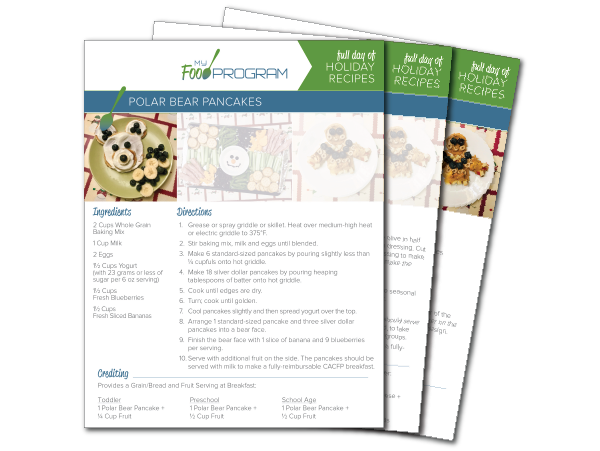
Most people have foods that they eat only at certain holidays. As adults, we might think of this as a fun time to change up our normal routines and perhaps even a time to indulge. But holiday food traditions are more than just fun for young children. Holiday food traditions help children process and understand the holidays and help prepare them for a change in their normal routine.
Why Holiday Food Traditions Matter
As adults, we welcome the change in our normal routine that comes with holidays. Children, however, can find that same change to be disorienting or stressful. Holiday food traditions can help children process and understand holidays and prepare emotionally for the different people and places and events they might experience during a holiday celebration.
Selecting, preparing and serving holiday foods can also help create connections between the child, their community and the holiday. It provides an opportunity for adults to talk about why these particular foods are served at the holiday and share their own memories. It is also a good opportunity to let children express their feelings about the experience of celebrating a holiday; both the positive and negative aspects.
How to Choose Holiday Foods
One of the most important aspects to consider are the cultural traditions of the families in your care. It may be worth your time to ask families about which holidays are important to them and what the holiday means to them.
For example, many families celebrate Christmas at this time of year. Some of the important messages of Christmas are the importance of thinking of others and celebrations of togetherness. You could link those messages to food by having children work together to prepare a meal or snack. You could also try serving meals family-style to promote a feeling of a shared table with an emphasis on togetherness.
Another example is Eid-al-Fitr, which is celebrated by Muslim families after the holy month of Ramadan. Eid-al-Fitr is sometimes called “Sugar Feast,” “Sweet Eid,” and “Festival of Sweets,” because of the sweet treats enjoyed on this holiday as a celebration. One of the important messages of Eid-al-Fitr is gratitude. Children could learn about gratitude toward their friends by decorating special desserts for them.
How to Extend Learning and Connection Through Holiday Food Traditions
- Leave Room for Creativity: Traditions don’t have to mean rigid rules! The most important thing to remember with holiday food traditions and young children is to let them make it their own. As long as the message of the holiday is getting through, then there’s room to allow children to be creative. For example, the snack recipe that we’ve provided gives children the opportunity to decorate their own sweater for their graham cracker character.
- Ask about Families: not all children have the same family structure and not every family celebrates each holiday the same. Use opportunities during meal preparation and service to talk about families. Ask questions like, “which grown-up in your life enjoys this special holiday food the most?” and “which special people are you going to be eating with this holiday?”
- Connect to the Meaning of the Holiday: many holiday food traditions have meaning. For example, oranges given in Christmas stockings represent the season of giving since oranges are so easily divided into sections and shared. And cranberries at a Thanksgiving feast are there to celebrate American agriculture as cranberries are one of only three commercially grown fruits native to the United States.
Download a Full Day of Holiday Recipes

